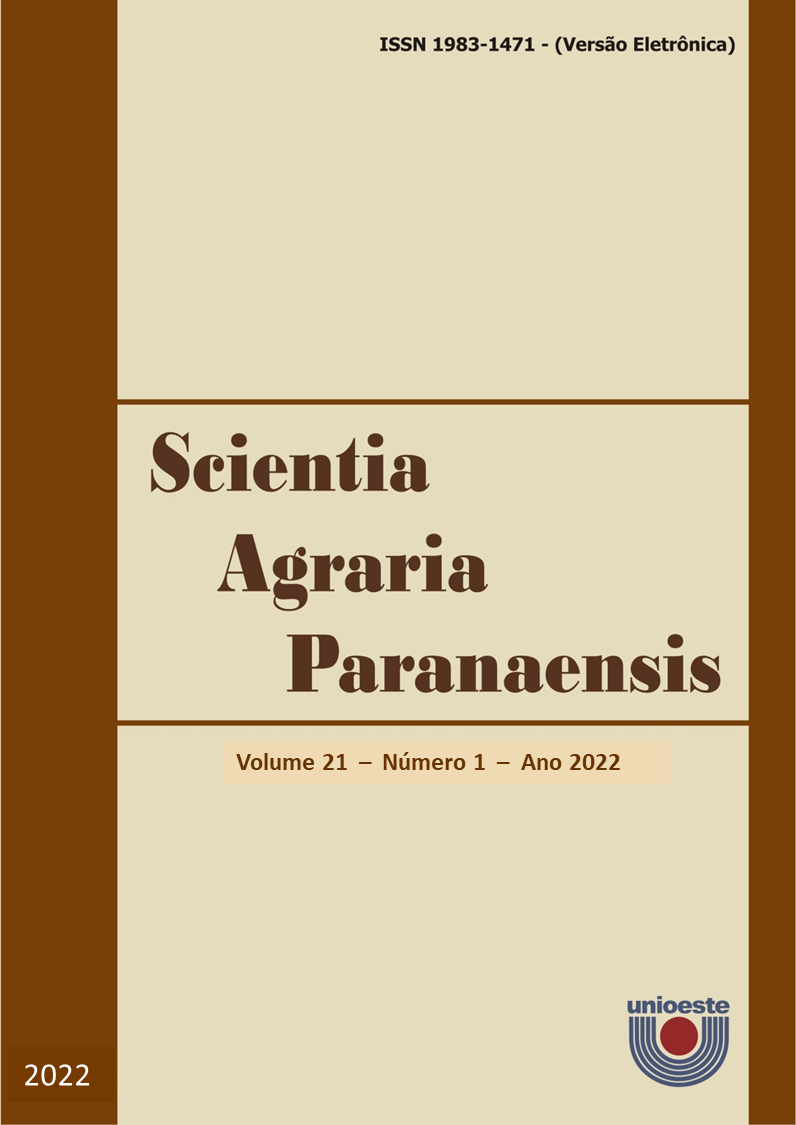Gas exchange and morphometric characteristics of basil according to the times and collection positions in the plant
DOI:
https://doi.org/10.18188/sap.v21i1.27934Resumo
The productive potential of plant species depends on the genotype versus environment interaction, so the choice of cultivar is decisive for the success of the crop. Thus, the objective of this work was to evaluate the levels of photosynthetic pigments and morphometric characteristics of two cultivars of green and red basil as a function of the collection time and different collection positions in the plant, as well as the gas exchange in response to variation of the flux density of photosynthetically active photons. The experiment was carried out in a protected environment with a randomized block design in a 2 x 3 x 3 factorial scheme containing 2 treatments consisting of two basil cultivars (alfavaca basilicão, red and green) and fifteen replications. The first factor was constituted by the cultivars, the second, by the time of collection, and the third, by the positions in which the collections were carried out on the plant. For evaluations of morphometric variables and gas exchange rates, the two cultivars were compared. Basil has photosynthesis saturation at radiation rates of about 1500 μmol m-2 s-1. The green colored cultivar was more productive, in addition to having the highest levels of chlorophyll a, b and total, and lower rate of leaf transpiration in response to photosynthetically active photons flow density, adapted for greater carboxylation efficiency and water use.
Downloads
Publicado
Como Citar
Edição
Seção
Licença
Aviso de Direito Autoral Creative Commons
Política para Periódicos de Acesso Livre
Autores que publicam nesta revista concordam com os seguintes termos:
1. Autores mantém os direitos autorais e concedem à revista o direito de primeira publicação, com o trabalho simultaneamente licenciado sob a Licença Creative Commons Attribution que permite o compartilhamento do trabalho com reconhecimento da autoria e publicação inicial nesta revista.2. Autores têm autorização para assumir contratos adicionais separadamente, para distribuição não-exclusiva da versão do trabalho publicada nesta revista (ex.: publicar em repositório institucional ou como capítulo de livro), com reconhecimento de autoria e publicação inicial nesta revista.
3. Autores têm permissão e são estimulados a publicar e distribuir seu trabalho online (ex.: em repositórios institucionais ou na sua página pessoal) a qualquer ponto antes ou durante o processo editorial, já que isso pode gerar alterações produtivas, bem como aumentar o impacto e a citação do trabalho publicado (Veja O Efeito do Acesso Livre).
Licença Creative Commons
Esta obra está licenciada com uma Licença Creative Commons Atribuição-NãoComercial-CompartilhaIgual 4.0 Internacional, o que permite compartilhar, copiar, distribuir, exibir, reproduzir, a totalidade ou partes desde que não tenha objetivo comercial e sejam citados os autores e a fonte.


